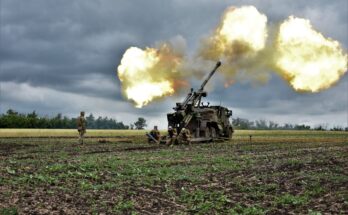by Dan Darling, International Military Markets Analyst, Forecast International.
As tensions between Moscow and the West persist nearly two years after Moscow’s takeover of Ukraine’s Crimean Peninsula, the trend among Eastern European nations that are members of the NATO Alliance has been to move away from Russian-sourced military hardware. Most of these former Warsaw Pact states are seeking to retire their aging and obsolete Soviet-vintage equipment and replace such materiel with NATO-standard, Western-produced hardware.
Countries such as Poland, the Czech Republic, Slovakia, and others have withdrawn scores of Warsaw Pact-legacy platforms in favor of Western-produced combat aircraft, helicopters, tanks and armored vehicles, artillery, and radars. The trend has become inexorable in one direction, particularly in the post-Crimea environment.
Then there is Hungary, which despite its impeccable Western credentials on paper – a post-communist, dual European Union-NATO member – has taken on an increasingly autocratic tone under its prime minister, Viktor Orban. While the EU and the U.S. have grown concerned over the undermining of democratic norms and erosion of the rule of law in Hungary under Orban’s rule, Orban himself has rejected “liberal democracy” as a model for Hungary, and instead has held up Singapore, China, Russia, and Turkey as models to admire.
This makes Viktor Orban’s upcoming meeting with Russian President Vladimir Putin next month all the more interesting.
Putin no doubt seeks to cultivate as many allies with which to fracture EU and/or NATO unanimity regarding relations with Russia – particularly concerning the threat to Moscow of economic sanctions, which Orban is on record saying harmed the EU more than Russia. He is also hoping to clinch funding with which to help jump-start the EUR12.5 billion ($13.65 billion) expansion of Russia’s Paks II nuclear power plant.
Orban, for his part, seeks to chart his own course to show that Hungary is not subordinate to its Western allies. More importantly, he wants to maintain warm relations with Russia in order to ensure for his country the steady supply of natural gas (of which Russia provides 80 percent of Hungary’s total intake).
But the most interesting aspect of the upcoming meeting is Hungary’s reported interest in purchasing up to 30 Russian transport helicopters in what is being estimated as a HUF142 billion ($490 million) acquisition. The Hungarian armed forces’ entire helicopter inventory consists of Soviet-vintage choppers, including Mi-8s used in the utility role and Mi-17s and Mi-24s equipped for combat purposes. While Hungary’s Defense Ministry has been prioritizing a replacement of this fleet since 2008, aside from an acquisition of three Mil Mi-8s in early 2014 at the cost of about $12 million there has been scant progress on this front due to constant pressures on the defense budget.
The government did approve an earmark of HUF105 billion ($363 million) under its FY16 budgetary outline for the acquisition of new transport helicopters. That allocation now appears to have grown in proportion to meet the aforementioned 30-helicopter requirement. Such a purchase would allow Hungarian helicopter pilots and maintenance crews to bypass acclimating themselves to new platforms, ensuring a seamless transition to newer-model helicopters and reinforcing Hungary’s longstanding client-supplier military procurement relationship vis-à-vis Russia.
Nonetheless, if such an acquisition indeed goes forward, it will place Hungary firmly out of step with its fellow NATO allies on the equipment modernization front while raising eyebrows at Alliance headquarters in Brussels.
For 50 years, Forecast International intelligence reports have been the aerospace and defense industry standard for accurate research, analysis, and projections. Our experienced analysts compile, evaluate, and present accurate data for decision makers. FI's market research reports offer concise analysis of individual programs and identify market opportunities. Each report includes a program overview, detailed statistics, recent developments and a competitive analysis, culminating in production forecasts spanning 10 or 15 years. Let our market intelligence reports be a key part of reducing uncertainties and mastering your specific market and its growth potential. Find out more at www.forecastinternational.com




